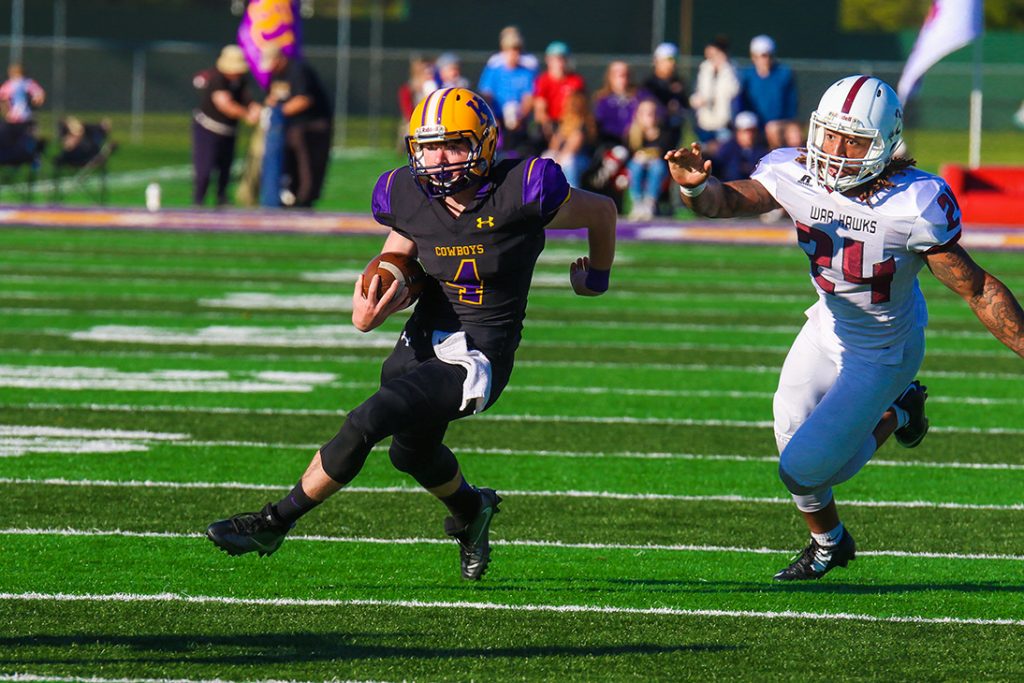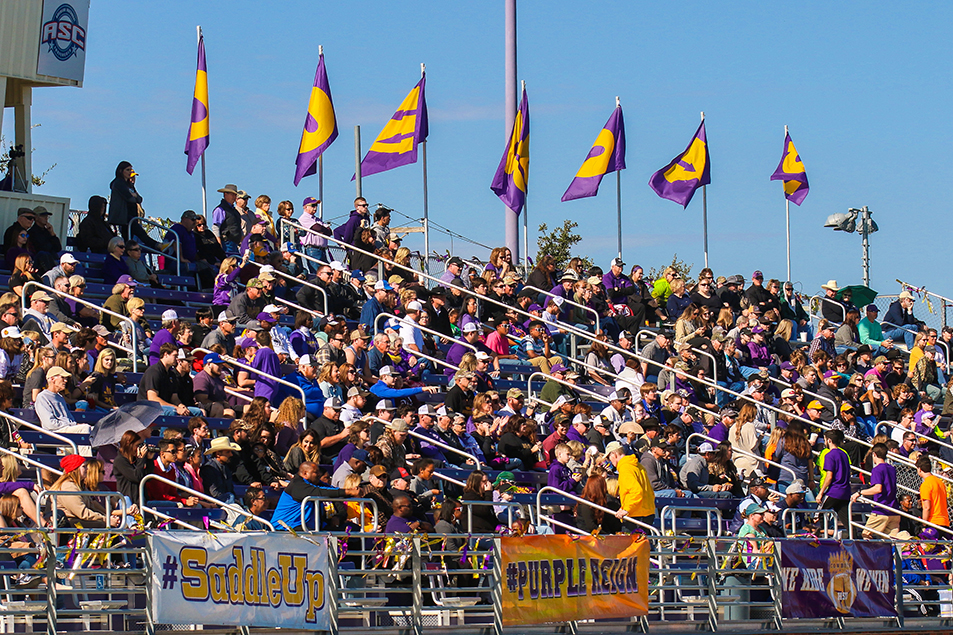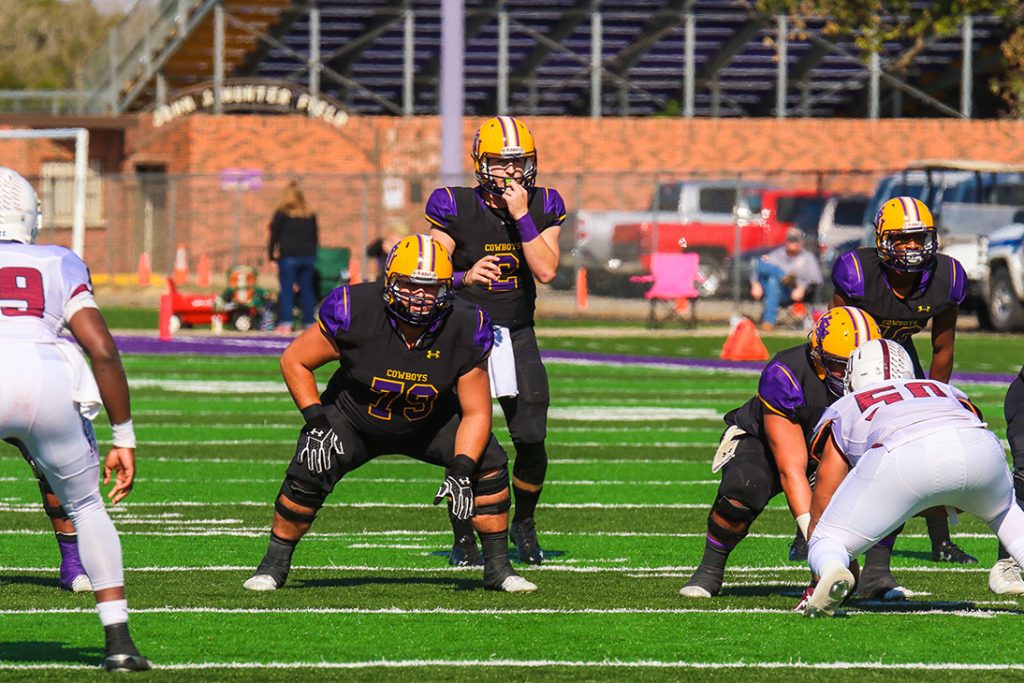By Brady Sloane
While it may not be the official sport of Texas (that title goes to the rodeo, remember?) Texans have a unique passion for football, especially at the high school and college level. Television, movies, art and music glorify the game and all that comes with it in the Lone Star State. Friday night lights, cheerleaders, parades, flags and marching bands set football evenings aglow with music and colors.
Many people outside this great state assume we all know the sport inside and out (and they also think we each own our own horse), but many of us have yet to truly understand this all-American game.
It may not be football season yet, but two-a-days will start around town before we know it, so why not take this time to discover the world of football (or at least not let your eyes glaze over every time it comes up in conversation)?

First Things First
Webb Murphy, currently Big Country Fellowship of Christian Athletes Area Representative, played football for ten years for Madison Middle School, Cooper High School, Eastern New Mexico University and McMurry University. He also has 13 years of experience coaching football to kids ranging from the 7th to the 12th grade.
I imagined that although many student athletes would have a good understanding of the game, some might not at all, and I was correct. Murphy said he starts with the basics: “This is a football. When we have it, we want to take it to the end zone. When they have it, we must stop them.”
Fair enough. (Check out the field graphic to understand terms like “End Zone.”)
That led me to realize that many young players (of almost any sport) learn to play the game before they fully understand it.
“You can play without completely understanding the whole picture,” Murphy said. “It’s the coach’s job to understand the ‘why.’ Often if the player is coachable and just does what the coach says, he doesn’t need to understand why. An example would be telling a player, ‘flare out of the backfield to the left with your hands up, ready to catch the ball.’ This might be so you’ll pull the linebacker outside and open up the middle. He doesn’t need to know all that. He will be better if he does understand it, though.”
When players build on prior knowledge every year and season as they actually play and learn the game, by high school their understanding can be pretty darn complex.
Ok. So we know that if a team has the ball, they are on offense and want to get it to their opponent’s end zone. If their team doesn’t have the ball, they are on defense (to stop the other team from scoring). A football team will have an offensive lineup and a defensive lineup. Only the team’s offensive or defensive lineup is on the field – eleven players.
The offensive team can pass, kick or touchdown in their opponent’s end zone for six points. The other way to earn points is by kicking a field goal (1 point after a touchdown or 3 points if the team hasn’t scored yet during their drive), or in rare cases, the defensive lineup can score (called a safety) when they tackle the offensive player with the ball in that person’s own end zone.
That is football in it simplest form.
“Football can be as simple or as complicated as you want to make it,” Murphy said “I prefer to keep things simple so the players can understand it. If a player knows what’s going on, they’re more likely to play fast and with confidence. Often, less is more; especially with kids.”
That may also be true for adults, parents and spectators who want to learn more. From here, check out the terms and tips to build onto your knowledge of the game.

Glossary of Terms
Down: The offensive team has four “downs” or periods of play during which the team attempts to progress 10 yards. If the team fails to advance 10 yards after four downs, the ball is surrendered to the other team.
Drive: A team’s offensive position (or set of offensive plays) with the ball until it is time to play defense.
Field Goal: When the football is kicked through the field goal posts scoring 3 points. One point can be scored (called an extra point) by doing this after obtaining a touchdown.
Fumble: When an offensive player has the ball and drops it.
Gridiron: The playing field.
Handoff: When the quarterback, after the snap, hands the ball to a running back.
Huddle: The group session right before the snap, led by the quarterback, who calls the play.
Incompletion: When a player on offense attempts a pass to another player, but that player misses the catch, drops the ball, or catches it out of bounds.
Interception: A pass caught by a defensive player, thus turning the ball over to the other team.
Kickoff: Occurs at the beginning of the game or after halftime when a player, typically on special teams, kicks the ball to send it as far from their own end zone as possible.
NFL: National Football League
Snap: A pass through the legs given by the center typically to the quarterback (a “wildcat” is when a snap is given to another player on the team).
Penalty: If a team does something against the rules, a penalty will deduct some of the yards that the team had acquired.
Strip: When a defensive player takes the ball away from an offensive player.
Touchdown: When someone on offense gets to the opposite team’s end zone with the ball.
Two-a-days: When a team holds practice twice in one day, usually in August gearing up for the season.

Positions
Offense
- Quarterback: Caller of the plays, yeller of the signals at the line of scrimmage, and leader of the team. Typically the person on the team whose name is most well known. Can throw far with good aim.
- Center: The center handles the ball on every play, including snapping the ball to the quarterback. Part of the offensive line.
- Running back: The running back specializes in running with/carrying the ball. They have to block, catch, throw, and tackle. There are different types of running backs including tailbacks and fullbacks, each with different specialties.
- Wide Receiver: Although they occasionally block, the wide receiver’s goal is to get to an open spot and do what they do best: catch passes.
- Tight End: This position both blocks and catches passes. Tight ends are positioned next to tackles.
- Guard and Tackles: Part of the offensive line, primarily for blocking defensive players from stopping their team’s play.
Defense
- Defensive Tackle: This lineman is designed to break through the offensive tackle to sack the quarterback or stop the play. Defensive tackles can move offensive lineman into possible paths used by running backs to stop the advance of the ball.
- Defensive End: The role of the defensive end is to attack the passer or force the ball carrier out of bounds.
- Linebacker: The linebackers are farther back, rather than on the line. Their job is to stop running plays and in some cases build up enough speed to cross the line of scrimmage and sack the quarterback.
- Safety: Often called the last line of defense, defending deep passes and runs.
- Cornerback: Cornerbacks cover the wide receivers who are on offense. They disrupt the pass to the wide receiver by catching it or hitting it out of the way. They also try to force the ball carrier out of bounds or toward players so that they can be tackled.
Special teams
Special teams include kickers and any players who are on the field during the kick (to protect the kick and block). There are four types of special teams (as they are very, well, specialized): Punts/kickoffs/punt returns, field goals/extra point attempts, kickoff returns, and blocking field goal and extra point attempts.
Where to get instant updates
To be up-to-date on Texas high school and college football, check out gofridaynight.com.
ESPN for NFL and other national leagues.
*Terms and definitions acquired from Murphy, middle school football aficionado Chase Wishart, dummies.com, ESPN.com, wikipedia.com, and dickssportinggoods.com.





























Leave a Reply